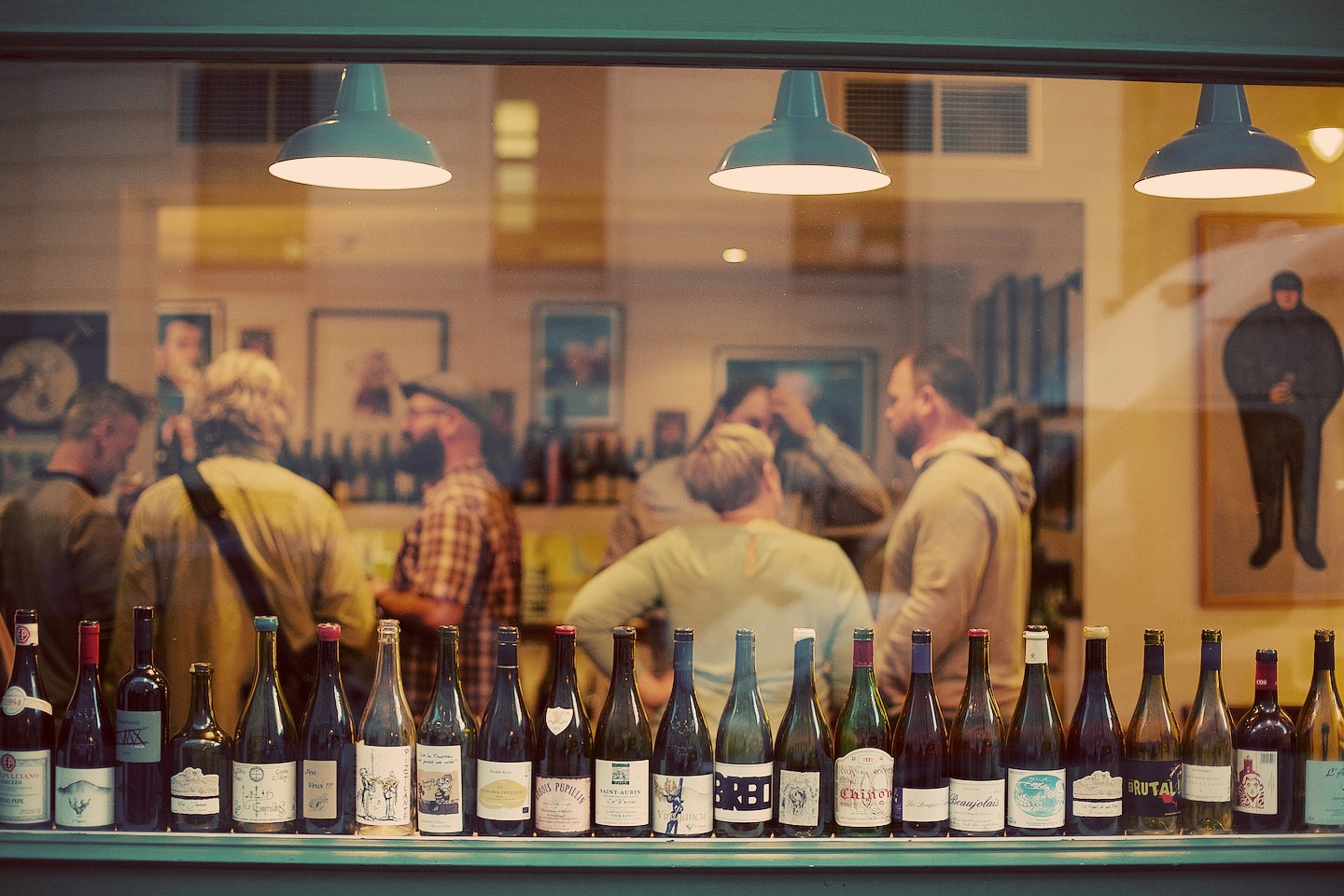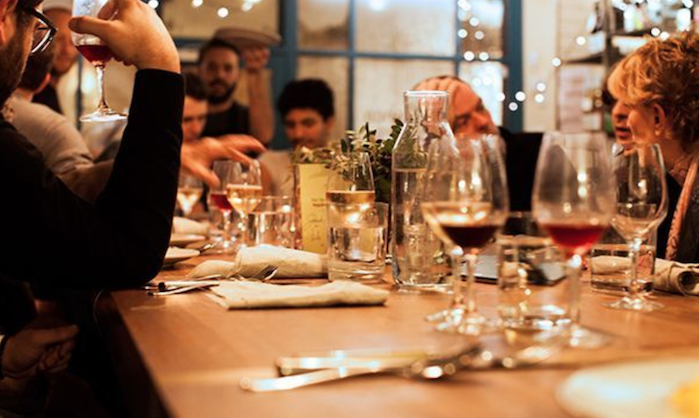Are you curious to know if there a disjunction between London and the rest of the UK in terms of wine taste? Although I am mainly interested in regional attitudes towards natural wines, one may broaden the terms of reference to include all interesting, authentic, terroir-driven wines, unusual styles, and offbeat grape varieties.

We have to begin with the c-word. A character in Hans Johst’s play, Schlageter, opined: ‘Whenever I hear the word culture I reach for my gun’, although I prefer to recall the adaptation of this quote pronounced by a producer in Jean-Luc Godard’s 1963 film Le Mépris, who says: ‘Whenever I hear the word culture I take out my chequebook.’* A wine culture should never be pretentious or elitist or revolve around money; rather it should be endemic, reflecting a society that is relaxed and curious about wine. Whilst more people than ever are drinking wine in the UK, we still seem to be unduly exercised by perceived trends and how others regard our wine choices.
*The character in Schlageter actually says: “Whenever I hear the word culture I release the safety catch on my Browning.”
Some people like to believe that an adventurous wine culture is synonymous with the easy availability of wines from the non-classic regions and countries. The origin of wine, however, means a lot more than simply the place where it is manufactured. After all, about thirty years ago, Bulgarian and Romanian wines positively (negatively) populated the shelves of supermarkets, hitting certain key price points (the result of cheap labour and industrial farming practices). Of course, in those days, a Bulgarian £3.99 Vatted Merlot was hardly representing a specific eastern Europe wine heritage. And nowadays, you may well be able to find wines from Brazil, China, Croatia and Georgia and other seemingly far-flung and exotic places, but in the majority of cases these are bland facsimile varietal wines made by oenologists as “products for a purpose”.
To all intents this is simply repackaging the same wine-taste (cold-fermented, filtered whites, for example, or reds manufactured with added tannins and chemical flavourings). It is not about the nuances of grape varieties either. Not only are international grapes made to a formula (by adding yeasts) so that they might derive from any country or region with a suitable wine facility, but indigenous varieties are also neutralised, so they neither reflect terroir nor vintage, but are a construct that may be always easily replicated to be instantly recognisable to the so-called average consumer.
This commercialism is not so much a gateway to more interesting things, as a revolving door to the same taste profile.
The common denominator approach to winemaking exists to create brands. Austria is associated with a single grape, Grüner Veltliner (brand Grüner), much as Italy used to associated with Pinot Grigio, and Argentina with Malbec. Yet so many commercial Grüners are heavily filtered, and are thoroughly anodyne as a result. This results in a vicious circle: people will buy Grüner because they believe that it is the great Austrian specialism, meanwhile producers in Austria will continue to make the style that they believe consumers can relate to. This commercialism is not so much a gateway to more interesting things, as a revolving door to the same taste profile. A commercial Fiano that tastes like a Cotes de Gascogne, or a white Verdejo, is offering three different countries and three different grape varieties in name only. The name of the wine, the country or region, the variety, is so much less important than the nature of the wine itself in terms of gauging how tastes are changing or developing.

My perception of a so-called wine trend is really a gut feeling based on the sales of wine companies, what I’ve seen on the wine lists of mover-and-shaker-bars-and-restos, glimpsed on the shelves of interesting independent retailers, and by regular trawling through social media. It is not a scientific approach, but statistics shed less illumination on the aesthetic responses to wines than on quantitative measurements of buying and consumption.
From what I gather anecdotally you’re less likely to find natural wines, skin contact orange wines, organic wines from small artisan producers (say) outside London because consumers are inherently more conservative outside the Metropolis. Does this perception hold water, or is it simplistic? Individuals do move from place to place for work, others visit interesting wine regions, and attend major artisan wine fairs like Real Wine, RAW, La Dive, Les Anonymes, Villa Favorita etc. in order to broaden their wine horizons. More than happy to engage and educate rather than kowtow to perceived taste, these people will always try to find an audience for their love of unique artisan wines even if it means swimming against the tide at first. The flipside is the restaurateur or sommelier who says: ‘My customers would not like this/these wines.’ (How often have we heard that?) Claiming knowledge of a customer and his or her taste is presumptuous. Certainly, if you are unwilling to engage, and will only give people what you think they want, they will, of course, default to the tried-and-trusted. We should never talk about “archetypal consumers” as that reduces individuals to the status of cyphers. I have done enough wine events to know by opening people to new tastes, you can help to change their attitudes towards wine.
Wine culture throughout the world may be concentrated in large cities (critical mass etc), but there are always demographics within demographics. You may have the opportunity to drink exciting, unusual authentic wines in London, but only in certain parts of town. East London, Central and SE London have become de facto wine destinations, whereas in other parts of London there is a comparative dearth of places to drink interesting wines. The reasons for this may be to do with the profile of the local inhabitants (age range, disposable income, nature of businesses in the area).
Outside London, cities like Bristol, Brighton, Manchester and Leeds may have the demographic ingredients to support a progressive wine culture, but for all that, it is down to individuals to make the leap of faith, and open a wine bar not as a local oddity, thereby excluding certain people, but ensure that any gastronomic enterprise is vibrant and inclusive, and that the service of wine is friendly and informative. It is not so much if you build it they will come, but that Rome wasn’t built in a day. Wine trends are here today, gone tomorrow; wine culture has roots.
Claiming knowledge of a customer and his or her taste is presumptuous. Certainly, if you are unwilling to engage, and will only give people what you think they want, they will, of course, default to the tried-and-trusted.
A few years ago, Hammersmith, Chiswick and Shepherd’s Bush had a number of wonderful gastropubs and restaurants run by individuals who assembled interesting wine lists featuring things that they enjoyed drinking. These areas have changed; many of those establishments have been sold and purchased by high street chains since then. Now those wine lists feature brands and bland commercial wines. In East London, meanwhile, wider “craft culture” has exploded with myriad bakeries, micro-breweries and distilleries fuelling a young artistic/bohemian community. There is an energy and excitement about food and booze around here; it is not simply, as the social caricaturists would have it “a hipster phenomenon” – although there is an element of certain people wanting to advertise themselves through their food and wine choices – it is that there is a community of people who love to explore new tastes, care about the provenance of ingredients (and wines), and enjoy talking about food and wine.
Wherever there is a healthy debate about food, you will probably find the stirrings of an informed wine culture. We must always return to this: wine is so much more than the label, or the perception of the product, or the adherence to a trend. It is the story inside the bottle. The more opportunity that people have to drink (and enjoy) real artisan wines, the more they will be creating a wine culture of their own.

